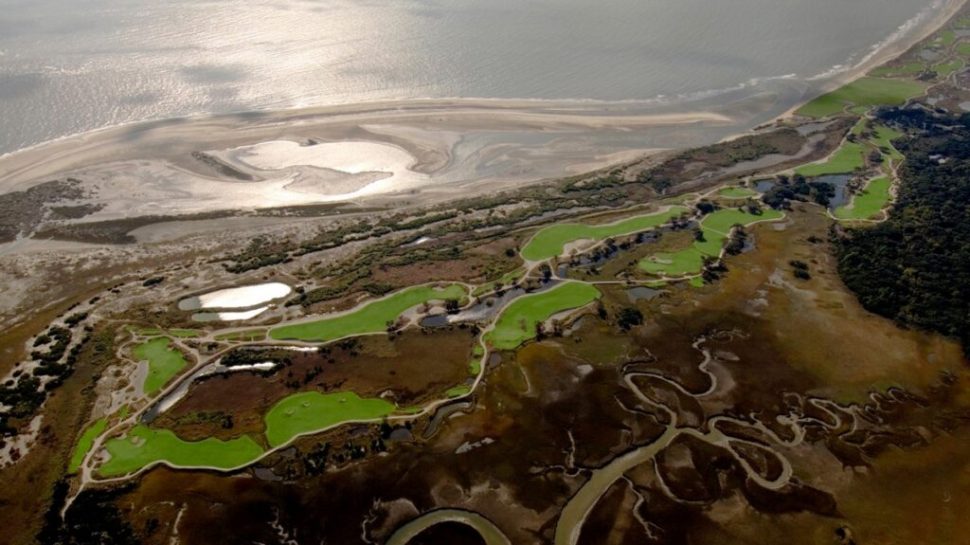
Estimated reading time: 7 minutes
This week’s PGA Championship at The Ocean Course will mark a return to one of the premier designs from noted architect Pete Dye. It was Dye’s vision to have maximum elasticity for the layout — permitting a varying set-up as weather conditions warrant.
The difficulty of The Ocean Course is well known. During the 2nd round in the ’12 PGA Championship — the wind decided to blow — as in blow. Players faced 25-30 mph sustained winds and the scoring average for the round was an all-time high for the event — 78.10. Interestingly, eventual winner Rory McIlroy scored 75 and remarkably Tiger Woods scored 71 but eventually faded during the weekend rounds for T11.
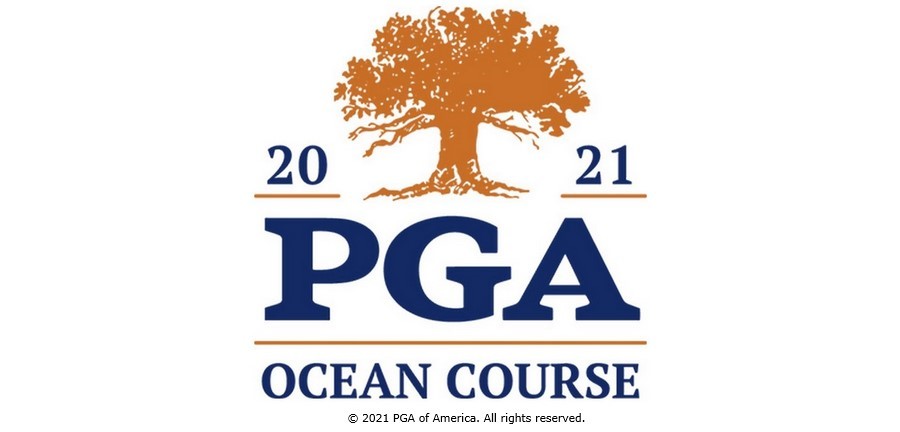
Four holes were cited by two figures intimately aware of The Ocean Course as well as past comments from Dye. How the players fare on these holes could very well determine who leaves Kiawah Island with the Wannamaker Trophy in their possession and how the others may be reaching for the best aspirin to counter a persistent headache.
The quote from Roy Scheider in the movie Jaws is quite apt about The Ocean Course when after eyeballing the shark for the first time he said — “we’re going to need a bigger boat.” Players will need to bring all the golf boat they have in combatting this relentless layout.
2nd Hole / Par -5 / 557 Yards
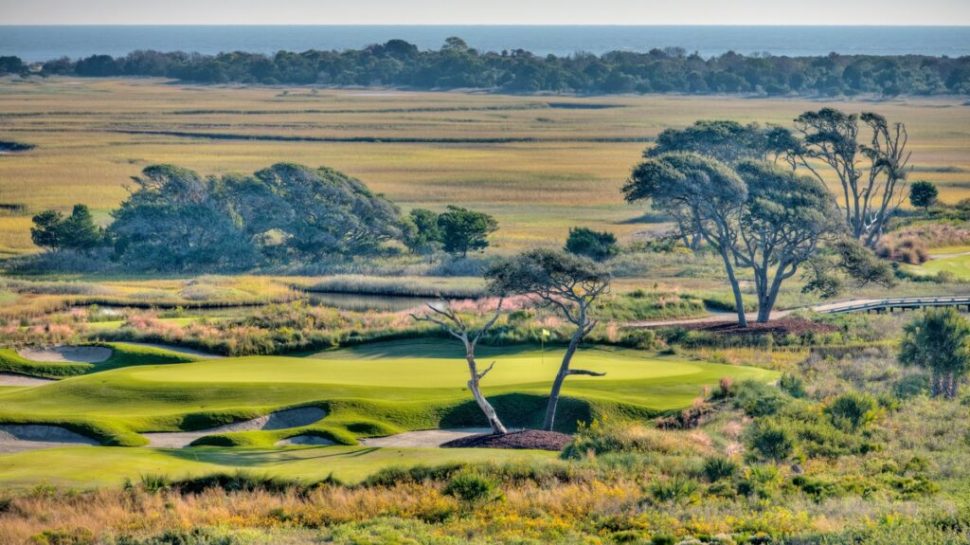
Pete Dye — This is a difficult hole — with two crossings over marshes. But good players have a wide-fairway and the green should be reachable in two. There’s no water about the green, nothing but sand.
The 2nd hole provides an opportunity for birdies — and even eagles — when the wind is favorable. When encountering a headwind players have to be smart enough on this dog-leg left hole in not missing too far to that side. Players hit over marshland on both the tee shot and the second shot.
When played downwind players can easily get home to the green in two strokes but the key will be in holding the elevated green.
“The resort moved in a couple of large oaks from within the hole that had been lost over the years to re-establish the original challenge,” said Scot Sherman, a practicing course architect now with Davis Love III and was involved with recent Ocean Course updatings in concert with Dye. “A well-placed tee shot to the proper eight yards on the left side of the fairway will allow the possibility of an eagle.”
George Fyre, Jr, served as Superintendent when the 1991 Ryder Cup Matches were played at The Course and is thoroughly familiar with the layout. “The question is can this green be held from 200-plus-yard out downwind? A mishit could lead to a big number.”
3rd Hole / Par-4 / 390 Yards
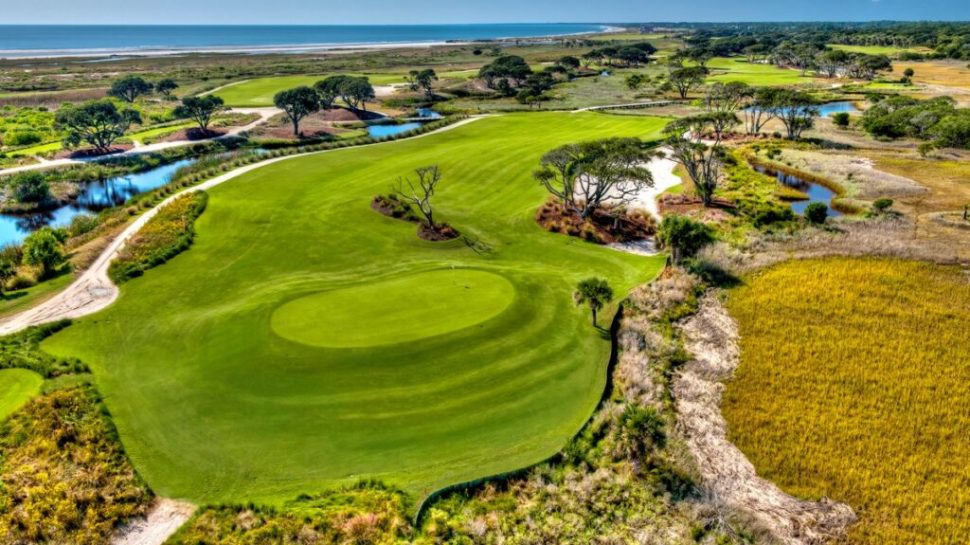
Pete Dye — The green is on a flattened sand dune next to the marsh. Better players will go at this elevated tabletop green with 9-iron or pitching wedge.
The 3rd presents an array of situations — depending upon wind direction and where tee markers are placed. The maximum length of 390 yards will be used for the championship — but it’s also likely Kerry Haigh, the man responsible for the daily course set-up, will opt to use a forward tee area of roughly 305 yards to tempt players to go at the green with their driver.
“I think Kerry will move the tees up a notch on this hole and turn it into a drivable par 4 for a couple of days. Just an opinion,” said Frye. “This will bring a lot of strategy into this short hole that has a perched / table top green. Downwind is going to make holding this small green that is 3,500 square feet a real chore. The big hitters will have something to ponder. Early in the round, this will be fun to watch.”
For Sherman — playing smartly at the 3rd will be crucial. “It is really best to lay back to the proper spot on the left center of the fairway and get to the top of the shelf. From there a well-placed wedge will allow for a birdie putt. Otherwise, going for this repelling green from the tee could leave the player with an awkward short shot which could just as easily be repelled from the green again.”
13th Hole / Par-4 / 497 Yards
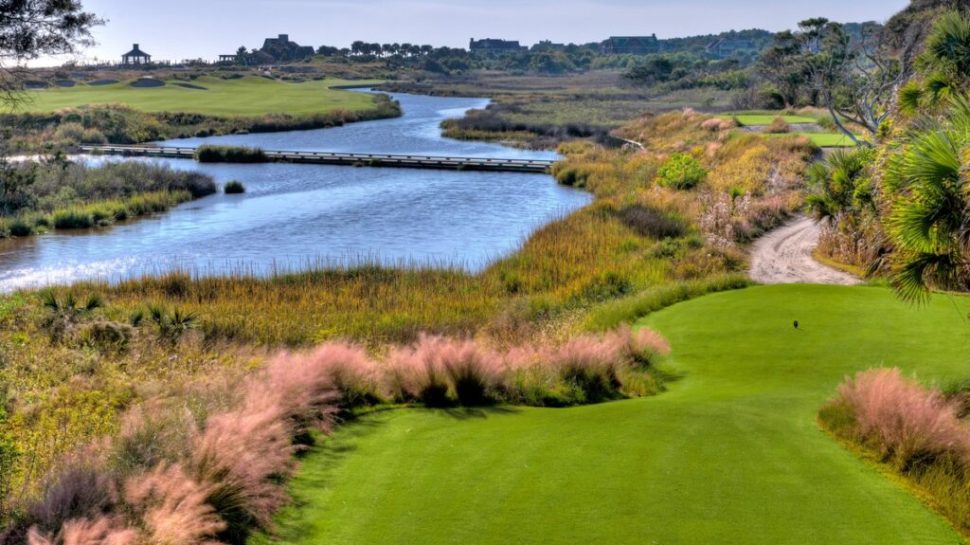
Pete Dye — These are two different holes here. One is way back at 497 yards. But I built another tee, 400 yards or so, with a very narrow landing area. It’s a good hole from either tee.”
The 13th played as the most demanding hole in the ’12 PGA Championship — 0.384 strokes over par and produced 42 double-bogeys, the most on any hole for that event.
“This par-4 can play very, very long. The tee shot is best placed as close to the water on the right as possible,” said Sherman. Any tee shot going left will leave players with a difficult approach with water very much in play at the green. Any par here is a good score – this is a hole where a big number could be recorded.”
Frye was equally adamant on what the players will encounter when stepping onto the tee box.
“While most of the landing areas at The Ocean Course are generous this driving area is very tight with lots of surrounding trouble. Then you have a narrow green protected by water right and sand bunkering to the left. This hole has serious consequences for poorly hit shots.”
14th Hole / Par-3 / 238 Yards
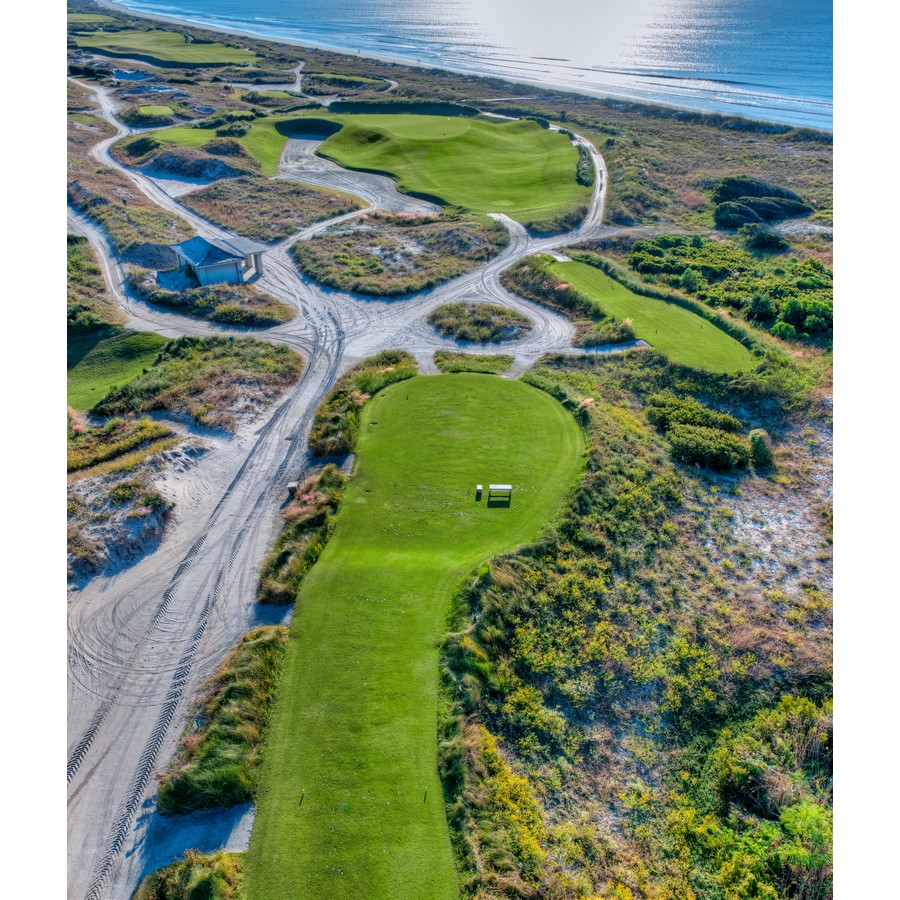
Pete Dye — This hole — after the flat greens at the 12th and 13th and the change in wind since the course is going back eastward now — will make players think. They’ll likely need between a 2-4-iron to hit the green.”
During the ’12 PGA Championship — the 14th was the most difficult of the four par-3 holes with a 3.319 scoring average. Whether dealing with a headwind or downwind conditions the challenge is real in either situation.
Frye’s respect for the hole is clear. “This par 3 has teeth – especially from the tips. It has a roll in the middle of the green and rolls off on all sides. It sits up in the air like a tower of turf. A small miss into this green can leave you 15 or more yards from the green in a huge swale. This green is large with multiple pin placements. The back left and back right pin placements will be very tricky. Par is a good score on this hole.”
Sherman concurs — ‘This will probably play as the longest par-3 and is exposed to the ocean on the right. Our changes will allow for it to play its full length of almost 240 yards. Employing center of the green strategy works for sure.”
